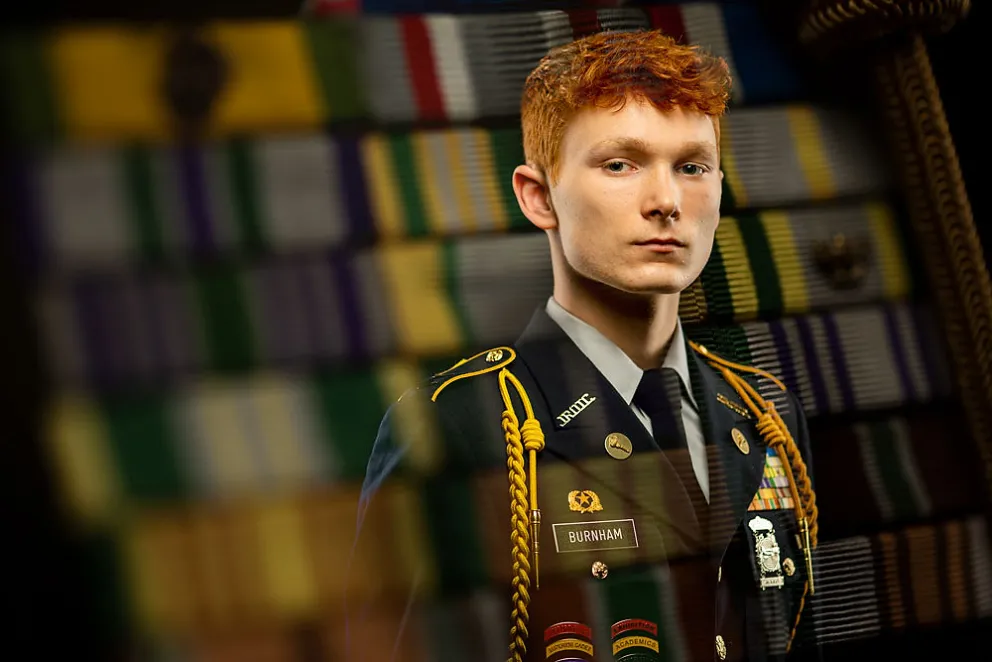
UPAA Blog 2020-21 #18 - 3/8/21 (text and photos by Steven Bridges)
Steven Bridges is senior photographer at the University of Tennessee, Knoxville Office of Communications and Marketing, and is the most recent winner of the UPAA Photographer of the Year award. His General Features and Illustrations category image "Building a Legacy" was voted Best in Show in the February 2021 Monthly Image Competition. This is his second "Best in Show" this year, see the first here. The MIC Q&A is a monthly feature on the UPAA blog to learn more about the thought and craft behind the UPAA's contest-winning images.
Tech stuff? What camera, lens, exposure, lighting, gadgets, gizmos, etc.?
•Canon EOS 5D IV
• Portrait: 135mm, 50 ISO, f2, 1/160; Ribbons: 100mm macro, ISO 50, f2.8, 1/160
•Three lights. Two strip lights on the sides and slightly behind the subject each with a Godox AD600. Main light was a boomed Chimera Super Pro Plus Shallow with a Godox AD200. Background was the dark side of a foldable V-Flat from V-Flat World.
How did you have an opportunity to make this photo? Planned? Self-Assigned? Something else?
This image was the result of a photo assignment from our news team. (See the UT news story here) The writer and I discussed photographing everything from an environmental portrait at the student’s high school, to a quick grip and grin of the student and his commanding officer. Due to COVID restrictions and scheduling issues, neither of those options worked out.
During the time of this assignment, I was in the middle of several other larger and more time consuming projects. This prevented me from doing any of the pre-visual planning I would have liked to do. So a couple of hours before the subject was to arrive, I decided to use a hero three light setup with some modifications mixed in. This would be easy and quick, give us multiple options, and allow me to get out the door to my next assignment.
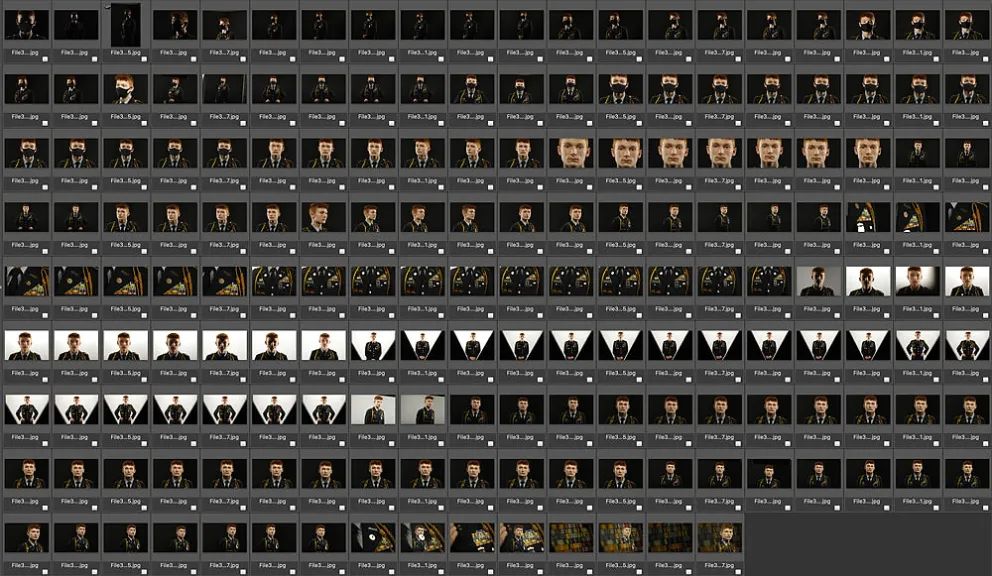
Above: The entire take from the portrait session.
Once the subject arrived, we spent about 15 minutes shooting a variety of poses. As I moved to my second lighting setup, we noticed a part of the subject’s uniform had been out of place. After correcting the mistake, we continued with the new set , then went back and reshot the earlier black background poses that we liked.
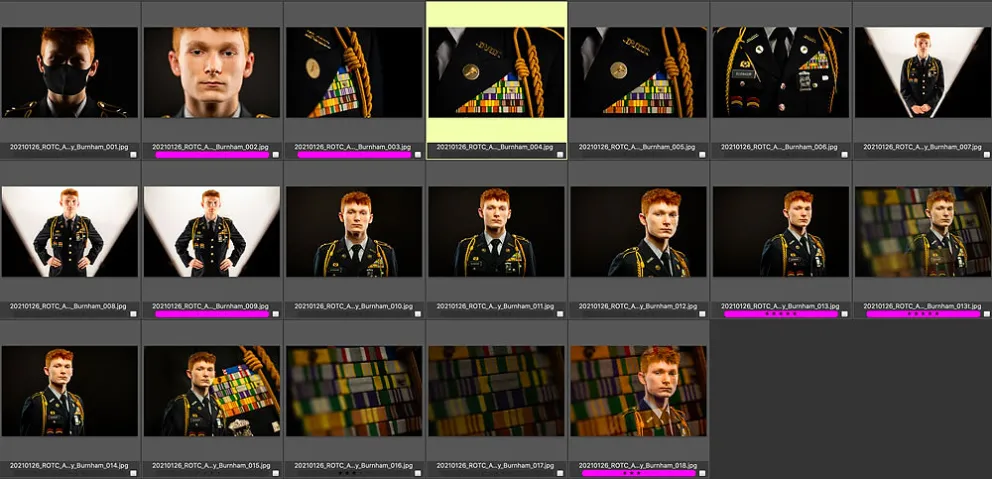
Steven's initial selects
As I was thanking my subject for his time, an idea hit me. What if I made a double exposure combining his portrait with his ribbons? I quickly made four multiple exposures, while letting the camera blend the images together. After seeing the fourth attempt, I felt like I nailed it. I was stoked. It was a mike drop moment as I rushed out to my next assignment.
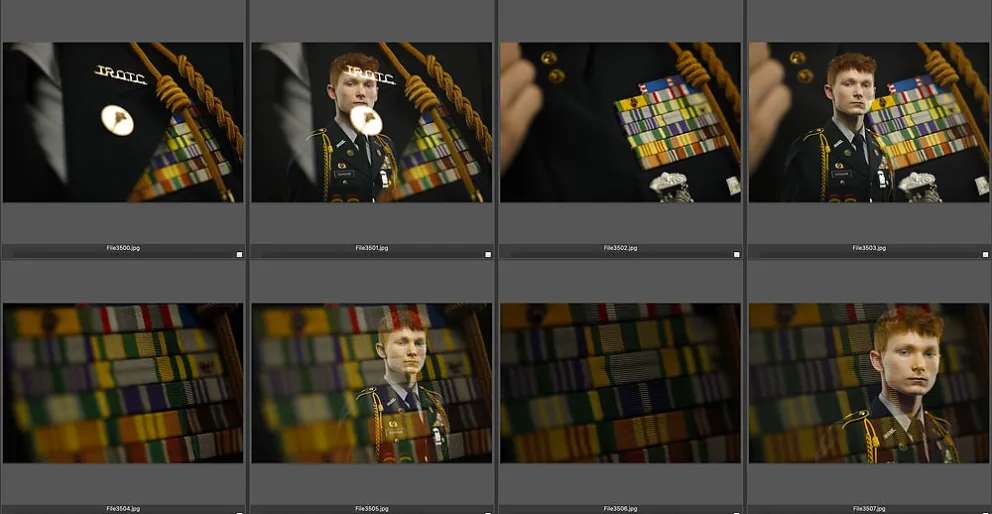
The 5DIV can do in-camera multiple exposures but preserves the original versions of the images as well.
Any unique logistics in making the photo? What sort of post processing (or not)?
When back at my desk editing, I liked the feel of the third multiple exposure the best. The only problem is that the ribbons bled through the face and shoulder too much. Having both of the original images, I combined them myself in Photoshop and masked out the areas I didn’t like. Now I had the image I was imagining. Everything was good.
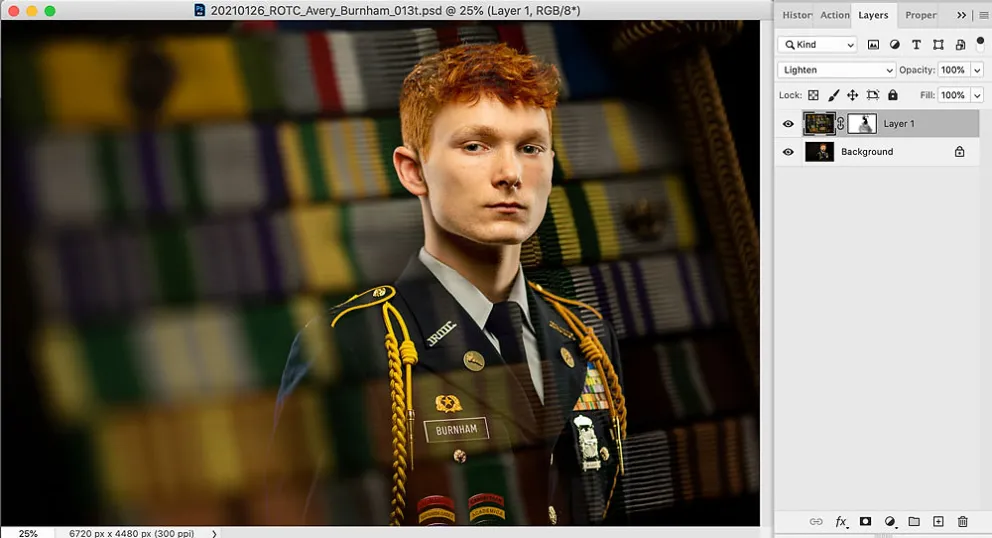
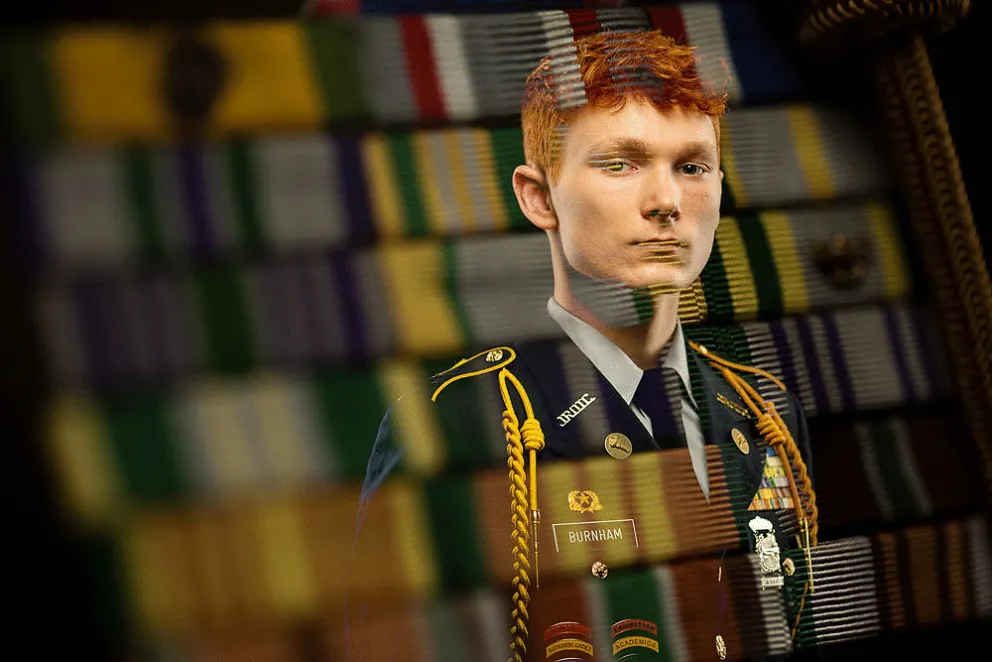
Top: Steven used a layer mask to improve on the in-camera double-exposure. Bottom: An animated GIF of the image before and after layer masking.
You chose this image as one of your 5 best of the month, and UPAA chose it as the best of everyone’s best of the month…What do you think makes it stand out?
I liked the way the colors and layers of the ribbons weaved around the subject. I felt that they brought depth and content to the photo while leaving focus on the subject.
What (if anything) would you do differently if you could re-shoot this today?
Re-shooting this today, I would do a deeper research into other posing and lighting techniques to give me more options than a lucky ADD find.
___________________________________________
"The ability to quote is a serviceable substitute for wit." W. Somerset Maugham | Thanks for reading the blog. Article submissions and suggestions always welcome, email editor Matt Cashore, mcashore@nd.edu. Follow UPAA on Instagram!